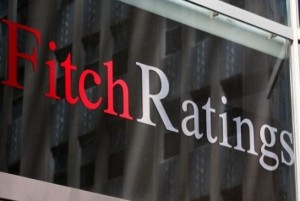PH seen weathering hike in US interest rates
The Philippines could weather any potential interest rate shock if ever US rates go up sharply, according to debt watcher Fitch Ratings.
Dutch-led multinational bank ING, however, sees risks in foreign exchange to keep the peso at a weaker 44:$1 level by yearend.
In a statement Friday, Fitch said Indonesia and Mongolia—emerging markets that have huge external funding requirements, high leverage as well as relatively bigger reliance on foreign short-term debt—would be most exposed and vulnerable to interest rate shocks.
The Philippines, India and Malaysia, on the other hand, are “better positioned” once the US increases interest rates, Fitch said.
The US Federal Reserve this week decided to keep interest rates ultra-low, but pundits see the US Fed adjusting rates next year or even earlier at a more hawkish pace.
“In general, the major Asian emerging markets are relatively well positioned. In the rate shock scenario conducted by Fitch, only Mongolia signaled risky or stretched levels of external funding requirements and leverage,” it said.
As for Indonesia, its high commodity dependence would also make it vulnerable as seen during the “taper tantrum” last year. “[Indonesia] continues to have one of the highest gross external funding needs among all major Asian economies despite a modest decline in its external funding requirement since then, and non-resident holdings of government debt remains high,” Fitch noted.
In the case of China, its closed capital account, negative external funding requirement as well as generally healthy public finances would limit direct risks to be caused by an interest rate climb in the United States. Fitch, however, warned China that “banking system-related risks linked to aggressive credit-led stimulus and a potential supply overhang in the key real estate market could make the economy vulnerable in the event of a broader global slowdown.”
India and Sri Lanka—two South Asian countries that have slashed their gross external funding requirements–are also expected to have stronger macroeconomic positions ahead of a spike in US interest rates.
“Even within Fitch’s base case of a gradual rise in US rates, the external funding environment is expected to become more challenging especially for emerging markets. In this setting, policy management—particularly structural reforms that boost exports and reduce the need for foreign capital—will be increasingly relevant for the credit outlook,” the debt watcher said.
In a separate commentary, ING Bank regional economist Tim Condon said also yesterday that the $80-billion foreign reserve threshold set by the Bangko Sentral ng Pilipinas (BSP) coupled with the lack of forward market intervention might lead to an equal two-way risk to the forex.
As such, Condon said ING expected the peso ending 2014 at P44.20:$1.
On Thursday, BSP Governor Amando M. Tetangco Jr. said monetary authorities would guard the peso from potential foreign exchange swings arising from the US Fed decision.
While Tetangco maintained that they “don’t expect wild swings in regional currencies,” he admitted that the Fed’s higher rate projections on top of its move maintaining the low rates stance for a considerable time after the end of the asset purchase program “could translate to near-term weakness in regional currencies” as markets expect the US dollar to further strengthen.
Starting last Monday or a couple of days leading to the US Fed announcement, the Philippine peso weakened and slipped past the 44:$1 mark. The peso further dropped to 44.42:$1 on Thursday, a day after the Fed announced it would maintain interest rates near zero for a considerable time. The currency market was closed yesterday due to torrential rains brought by Tropical Storm “Mario.”
Tetangco said the BSP “will continue to monitor developments closely and maintain a presence in the market as needed to smoothen excessive exchange rate movements.”

